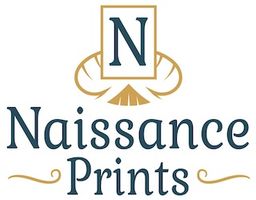What is Giclee Printing?
Giclée Printing: From Technical Glitch to Artistic Revolution
Imagine a world where a single technical glitch could have erased an artist’s masterpiece forever. In the early 1990s, this was almost the fate of iconic photographs by Graham Nash—if not for the unexpected birth of a new art form: the Giclée print.
The Birth of Giclée Printing
Many are familiar with the story: Graham Nash sent negatives of photographs of Joni Mitchell for an upcoming show, only to have them lost. Left with only contact sheets, Nash, ever inventive, produced digital scans using a state-of-the-art scanner developed by Disney and printed them on an Iris 3047, a high-resolution industrial prepress proofing inkjet printer. The results were remarkable—so much so that Nash purchased his own Iris printer and founded Nash Editions.

In the late 20th century, artists and photographers were pushing the boundaries of traditional printmaking. However, existing technologies often fell short, especially when it came to reproducing the subtle details and rich colors of their work. The arrival of the Iris 3047 printer, with its groundbreaking ability to produce high-resolution digital prints, marked a turning point. This printer wasn’t just a machine; it became the catalyst for a new artistic movement.
Jack Duganne, a printmaker at Nash Editions in the early 1990s, sought a term to differentiate these prints from the commercial Iris prints used as proofs. To elevate these prints beyond their industrial origins, he coined the term “Giclée,” derived from the French word gicleur (a technical term for a jet or nozzle) and the verb gicler (meaning “to squirt”). Duganne ultimately settled on “Giclée,” meaning a spurt of liquid.
The Evolution of Giclée Printing
Over the years, Giclée printing has evolved from a niche technology into a respected method of art reproduction. Today, modern Giclée printers use archival-quality pigments and a wide range of substrates, ensuring that each print can last for decades without fading. This evolution has opened doors for artists to explore new creative possibilities, making high-quality art more accessible to collectors worldwide.
As Jack Duganne once remarked, “Giclée prints are not just reproductions; they are a continuation of the artist’s vision, captured with precision and care.” This sentiment resonates across the art community, where Giclée prints are celebrated for their ability to faithfully reproduce the nuances of the original work.
A Lasting Impact
Have you ever marveled at the vibrancy of a print hanging on your wall? It’s possible you were admiring a Giclée print, meticulously crafted to bring the artist’s vision into your home. As you explore the world of art, take a moment to appreciate the blend of technology and creativity that makes these prints possible. Next time you admire a piece of art, pause and consider: could this be a Giclée, crafted with the utmost care to preserve the artist’s vision?
Giclée printing is a progression of printmaking born from the ingenuity of artists. What began as a creative solution to a technical problem has evolved into a powerful tool for both artists and collectors. As we look to the future, one can only imagine the new heights this technology will reach, forever changing the landscape of the art world.
Intrigued by the world of Fine Art Prints? Dive deeper into related topics on my blog, where you’ll discover everything from substrate selection to the practicalities of producing your own Giclée prints.
